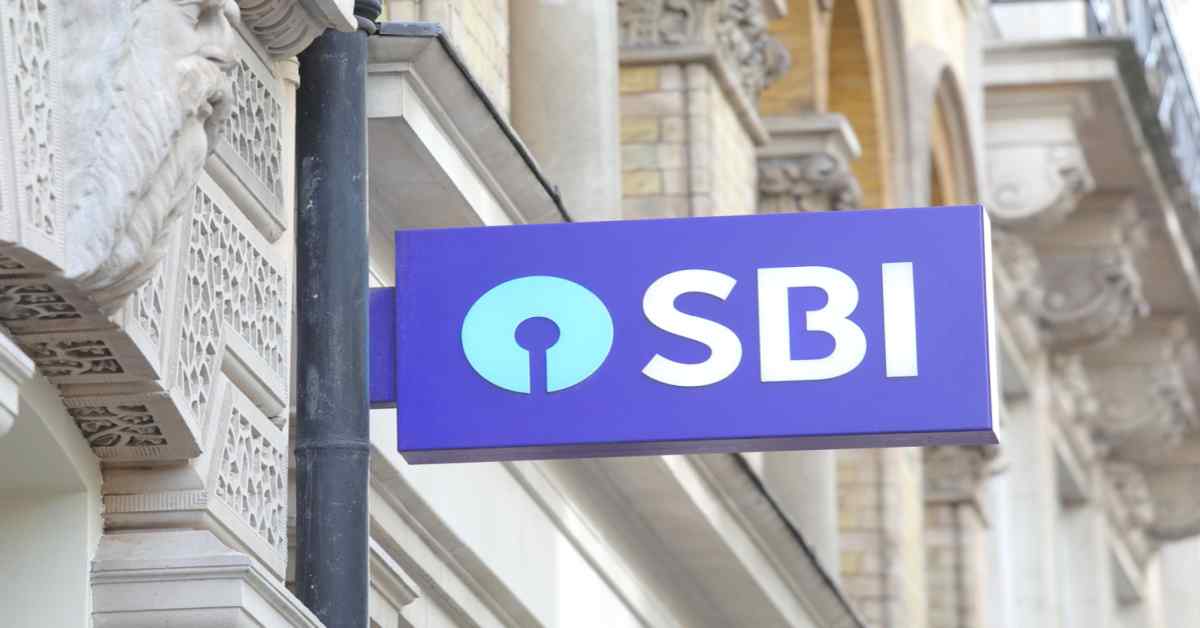Table of Contents
Quality Service Guarantee Or Painting Free

Get a rental agreement with doorstep delivery

Find the BEST deals and get unbelievable DISCOUNTS directly from builders!

5-Star rated painters, premium paints and services at the BEST PRICES!
Loved what you read? Share it with others!


Submit the Form to Unlock the Best Deals Today
Check Your Eligibility Instantly

Experience The NoBrokerHood Difference!
Set up a demo for the entire community
REPO Rate Linked to Home Loans
Table of Contents
Discover how changes in the Repurchase Rate (Commonly known as the Repo Rate) can influence the interest rates on your home loans. In this blog, we delve into the dynamics of this financial mechanism and its implications for homeowners, providing valuable insights for better financial planning.
Recommended Reading

Home Loan for Women in India - Interest Rates and Benefits
January 31, 2025
4652+ views

What is Home Loan Sanction Letter and Why is it So Important?
January 31, 2025
9371+ views

Buying Your Dream Home? These Are the Home Loan Documents Required in India!
January 31, 2025
2928+ views

Home Loan Insurance: Protecting Your Investment
January 31, 2025
13256+ views

Home Loan Top-Up: Interest Rate, Eligibility and Process
January 31, 2025
10677+ views
The Reserve Bank of India (RBI) on August 10, 2023, left the repo rate unchanged at 6.50%, announcing its third bi-monthly policy for fiscal 2023-24 (FY24). This is the third time in a row the banking regular has maintained a status quo on its key policy rate amid soaring inflation propelled by a disruptive monsoon. Cumulatively, the RBI hiked the repo rate by 250 basis points in FY23.
Understanding the intricacies of home loans linked to repo rate is crucial, given the significant impact it has on your finances and home loan liability. Familiarizing yourself with the workings of the reverse repo-linked lending rate is equally vital for a comprehensive grasp of your home loan dynamics. Read on for a comprehensive guide!
Quality Service Guarantee Or Painting Free

Get a rental agreement with doorstep delivery

Find the BEST deals and get unbelievable DISCOUNTS directly from builders!

5-Star rated painters, premium paints and services at the BEST PRICES!
What Does Repo Linked Lending Rate Mean?

Financial institutions must pay interest for the money they borrow from the central bank, just as borrowers must pay interest to obtain credit from banks. The repo linked interest rate meaning is the name for this type of interest. Repo is an acronym for repurchasing option’ or ‘repurchase agreement.’ Scheduled commercial banks give RBI securities such as Treasury bills or gold in exchange for overnight credit in the event of a liquidity shortage.
It is important to note that banks require funds in order to lend. They can borrow money from central banks in addition to receiving deposits from the general population. This is made possible by repurchase agreements.
Current Repo rate linked home loan: 6.50%
Reverse Repo rate linked home loan: 3.35%
The repo-linked lending rate RBI circular is an effective instrument for the banking regulator to control inflation, in addition to assisting banks with lending availability. The RBI raises the repo rate linked to home loans in times of high inflation to discourage banks from borrowing. As a result, the economy’s liquidity is reduced, and the rising inflation is tamed. In the event of lowering inflation, a reversal strategy is implemented. In this scenario, the repo rate linked to home loans is lowered to encourage banks to borrow more credit, increasing market supply and new investment activity.
The fundamentals of India's repo rate
- The Reserve Bank of India (RBI) sets and monitors the repo rate.
- The RLLR meaning is a mechanism used to keep inflation under control.
- The RLLR home loan is used by banks to alter the rewards on savings accounts and fixed deposits.
- The repo rate linked to home loans was previously known as the reverse repo rate until October 2004.
What Is a Reverse Repo Rate, And How Does It Work?
The interest that banks charge the RBI to lend credit to the banking regulator is known as the reverse repo rate. The RBI also uses the reverse repo rate to absorb liquidity from the system to sustain desirable inflation levels. The RBI encourages banks to lend money to the RBI by raising interest rates, resulting in the system’s surplus liquidity being depleted. As a result, banks do not have a lot of credit to lend.
What is the Difference between repo rate and reverse repo rate?
| Repo Rate | Reverse Repo Rate |
| The repo rate is linked to home loan interest charged by the RBI when it lends credit. | The rate of interest paid by the RBI on its borrowings. |
| The repo rate linked to home loans is always lower. | The rate of the reverse repo is always higher than the rate of the forward repo. |
| Inflation-controlling instrument. | A tool for keeping cash flow in check. |
| Works under the buyback agreement. | Works under the reverse repurchase agreement. |
| Bonds are used to conduct transactions. | Bonds are used to conduct transactions. |
MCLR to Repo Rate
Prior to the October 2019 decision to link the interest rates on house loans to the repo rate, banks priced house loans using internal lending benchmarks such as the prime lending rate, base rate, and the marginal cost of funds-based lending rate (MCLR).
The MCLR was an internal lending benchmark that went into force in 2016 and allowed banks to reset the loan rate at intervals outlined in the loan agreement. In contrast to expectations, banks did not immediately pass on rate reductions that the banking regulation had implemented to clients.
Their delay in passing on the benefits can be explained by their respective mechanism for determining interest rates.
MCLR-Based Loans
Calculation Factors: MCLR is determined by considering various factors such as the marginal cost of funds, operating costs, and the cost of maintaining statutory reserves. Banks need to consider the average cost incurred by them for various sources of funds.
Complex Determinants: The calculation involves a comprehensive assessment of multiple factors, including the cost of deposits, which takes into account the interest rates paid to depositors.
Due to this complexity and the involvement of various factors, MCLR-based loans may not immediately reflect rate reductions. Banks have more components to consider in their calculations, making the transmission of policy rate changes a more intricate process.
Repo Rate Linked Loans
Direct Linkage: In contrast, repo rate linked loans have a more straightforward mechanism. The interest rate is directly linked to the repo rate set by the central bank. When the repo rate changes, the interest rate on these loans adjusts accordingly.
Transparency and Simplicity: The direct linkage provides transparency and simplicity in the transmission of policy rate changes. Since the interest rate is explicitly tied to the repo rate, changes are likely to be more immediate and straightforward.
Therefore, the difference in the speed of transmission between MCLR-based loans and repo rate linked loans is explained by the complexity of factors involved in the MCLR calculation compared to the direct and transparent linkage in repo rate linked loans.
Repo Rate Linked Home Loan Vs MCLR
MCLR to RLLR is easily understood and calculated if you know the basic principles.
| RLLR (Repo Linked Lending Rate) | MCLR (Marginal Cost of the Fund-Based Lending Rate) |
| The RBI declared the external benchmark rate in its bi-monthly monetary policy. | Banks’ internal benchmark rate, as updated by them from time-to-time. |
| The current plans have a lower interest rate. | The MCLR linked to home loans is relatively high. |
| As and when the repo rate linked to the home loan is updated, the Home loan rate will vary by the same amount as the repo rate. | Less transparent, because banks may or may not elect to adjust their MCLR rate in lockstep with policy rate changes. |
| This scheme’s reset frequency is limited to three months. | The frequency of resets under this method varies by bank and might range from one month to a year. |
| The transmission of rate changes to the borrower is thorough and takes no more than three months. | The rate change communication to the borrower could be lower or greater depending on the reset period. |
Disappointed by the MCLR regime’s slow and modest success, the RBI ordered banks to transition to an external lending benchmark in 2018. This would enable borrowers to benefit more from policy changes. After that, beginning in October 2019, banks started shifting to the repo rate-linked lending system. As of October 2023, 36 banks out of 62 have adopted the repo rate as an external benchmark for their floating rate loans to the retail (which includes home loans) and micro and small enterprises (MSE) sectors.
Repo Rate and Home Loans: What is the Impact?
When RBI Lowers the Repo Rate
A lower repo rate results in reduced borrowing costs for banks, as they pay less interest when obtaining funds from the central bank. This, in turn, stimulates the lending capacity of banks, encouraging them to borrow more. As a consequence, banks are expected to pass on these benefits to customers by reducing interest rates on loans, ultimately leading to a boost in borrowing activity, especially in segments like home loans.
When RBI Raises the Repo Rate
When the Reserve Bank of India raises the repo rate, it elevates the cost of borrowing for banks, curbing their lending capacity. This, in turn, prompts banks to raise interest rates on loans, including home loans, making them more expensive for borrowers. Higher interest rates can lead to a decline in borrowing activity, particularly in the housing market, as potential homebuyers face increased costs. The overall impact extends to a potential slowdown in economic activity, affecting consumption and investment across various sectors.
In summary, changes in the repo rate directly influence the borrowing costs for banks, subsequently impacting their lending capacity and the borrowing capacity of home loan borrowers. Lower repo rates generally create a conducive environment for affordable borrowing, while higher repo rates may present challenges in terms of increased borrowing costs.
Impact on Inflation
The repo rate is a useful instrument for the banking regulator to control inflation in addition to assisting banks with lending availability. The RBI raises the repo rate in cases of rising inflation to deter banks from borrowing. As a result, the economy’s liquidity ultimately declines, which eventually controls the high inflation. In the event of declining inflation, a reversing strategy is implemented. In this scenario, the repo rate is lowered to encourage banks to take on more debt, which ultimately boosts the market’s supply and sparks new investment activity.
Additional Points
Overnight Use: The credit provided by the RBI is typically for a very short duration, often overnight. Banks borrow funds from the RBI to meet their short-term liquidity needs, ensuring they have enough money to fulfil their daily obligations.
Securities as Collateral: In exchange for the funds borrowed, banks need to provide collateral to the RBI. This collateral usually takes the form of securities, such as government bonds or other approved financial instruments. These securities act as a guarantee for the borrowed money.
Set Price: When banks deposit securities with the RBI, there is a pre-determined or "set" price for these securities. This price may be based on market values or other agreed-upon terms. It essentially determines the value of the collateral provided by the banks.
Bank Behavior: Repo rate linked home loan banks are often relatively sluggish to lower their lending rates while they are quicker to pass on rate increases to clients. Therefore, even though changes in the repo rate ought to be instantly reflected in the interest rates charged by financial institutions, only rises do so, and the RBI frequently must remind banks to pass on the advantages of lower rates to borrowers.
Repo Rate: Latest Updates
As of December 8, 2023, experts expect the Reserve Bank of India's (RBI) Monetary Policy Committee (MPC) to keep the repo rate unchanged for the fifth time. The repo rate has stayed at 6.5 per cent since February 2023, going up by 250 basis points since May 2022.
According to Dinesh Khara, Chairman of the State Bank of India (SBI), the upcoming policy is likely to maintain the status quo. The Central Bank's recent decision to raise risk weights on consumer credit reveals a careful approach, indicating that they are taking precautions and currently have no immediate intentions to reduce interest rates. In simple terms, this move suggests that the Central Bank is being cautious about lending to consumers and is not planning to make borrowing cheaper in the near future.
What are the Current repo and reverse repo rates?
| Repo rate | Reverse repo rate |
| 6.50% | 3.35% |
Monetary Policy Review
Every two months, the six-member Monetary Policy Committee of the RBI, which is chaired by the governor, meets to determine the bank’s monetary policy and adjusts key interest rates in accordance with the state of the economy. The monetary policy review also summarises the nation’s current economic circumstances and details the current and upcoming steps the RBI intends to take to boost the economy.
Rewrite the conclusion keeping the point about how banks behave and what RBI does in relationship to that.
If you're considering a home loan, it is crucial to be aware of how the changes in the repo rate can directly impact your borrowing costs. While the process might seem complex, NoBroker simplifies it for you. NoBroker's Home Loan expertise ensures you a smooth, seamless experience. Connect with us today for reliable assistance in navigating the intricacies of Repo Rate Linked Home Loans.

FAQ’s
Ans. The Reserve Bank of India (RBI) is in charge of periodically monitoring and fixing the repo rate. During the RBI's bi-monthly monetary policy review meetings, the rates are adjusted.
Ans. The repo rate linked to home loans in India is currently at 4%.
Ans. The Reserve Bank of India (RBI) is unable to give greater interest rates on deposits while charging lower rates on loans. This is why the repo rate, which is the interest charged to banks for lending money, is higher than the reverse repo rate, which is the interest paid on deposits.
Ans. The repo rate is the interest rate that the RBI charges banks to lend them money. Since October 2019, all major Indian banks have tied their housing loans to the repo rate, allowing policy rates to be transmitted more quickly.
Loved what you read? Share it with others!
Most Viewed Articles

Home Loan Interest Rates for All Banks in November 2025
January 31, 2025
30676+ views

SBI Home Loan Interest Certificate: Benefits, Offline and Online Options, Get via Yono App in 2025
January 31, 2025
25975+ views

SBI Home Loan Interest Rates - Updated in January 2025
January 16, 2025
25763+ views

ICICI Home Loan Interest Rates - Updated in November 2025
January 31, 2025
23939+ views

Top 10 Housing Finance Companies in India
January 31, 2025
17334+ views
Recent blogs in
Central Bank of India Home Loan Interest Rate - Updated in February 2025
February 13, 2025 by Prakhar Sushant
JK Bank Housing Loan Interest Rate - Updated on February 2025
February 6, 2025 by Krishnanunni H M
Bank of Maharashtra Home Loan Interest Rates - Updated in February 2025
February 6, 2025 by NoBroker.com
Central Bank of India Home Loan Interest Rates - Updated in February 2025
February 6, 2025 by NoBroker.com
Indiabulls Home Loan Interest Rates - Updated in February 2025
February 6, 2025 by NoBroker.com




Join the conversation!